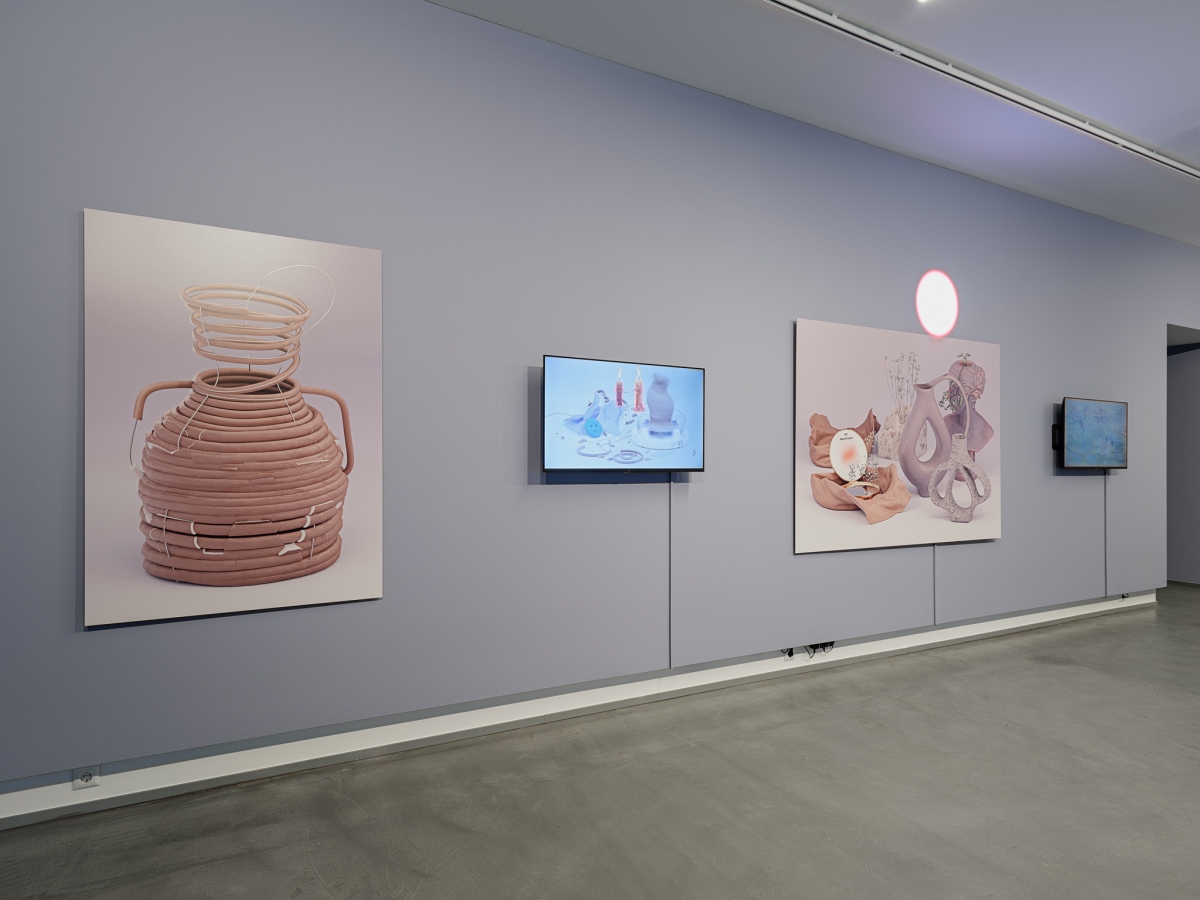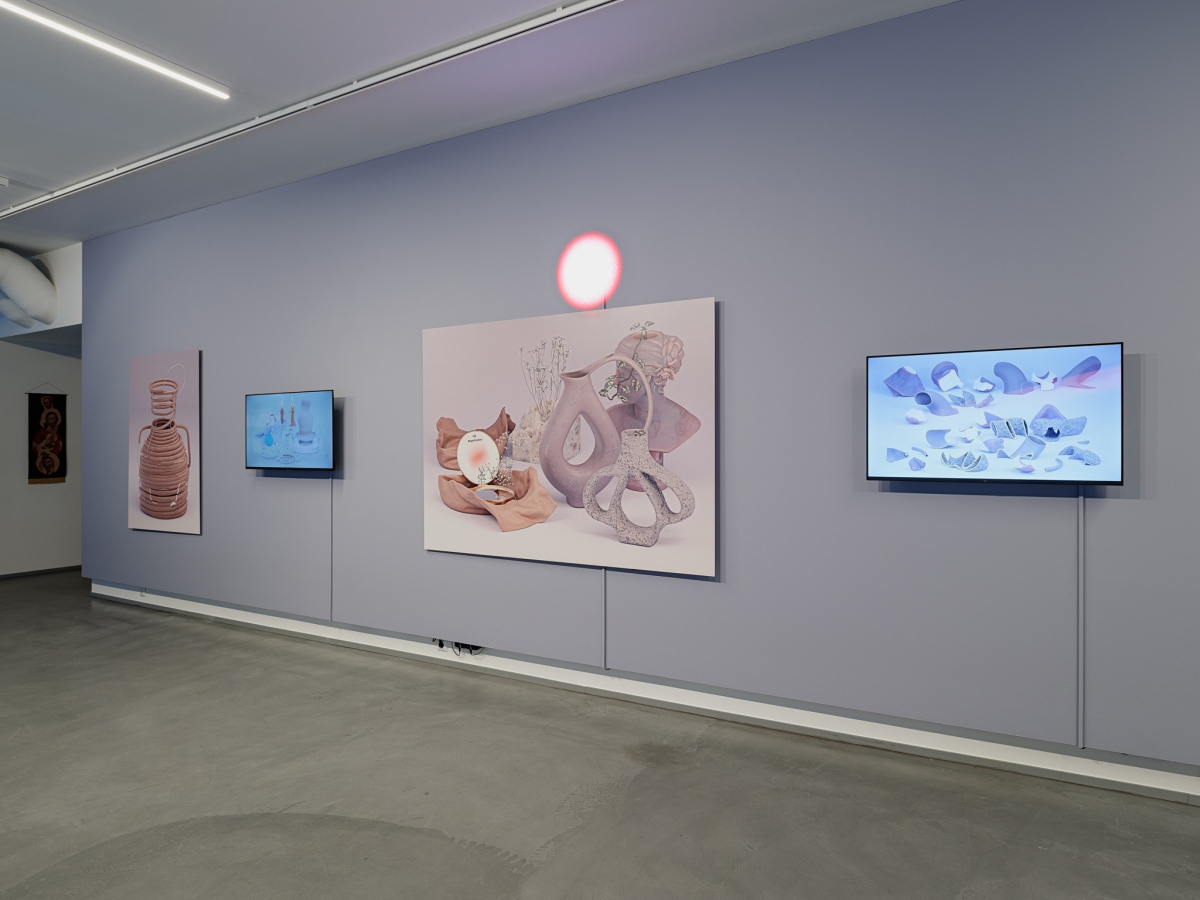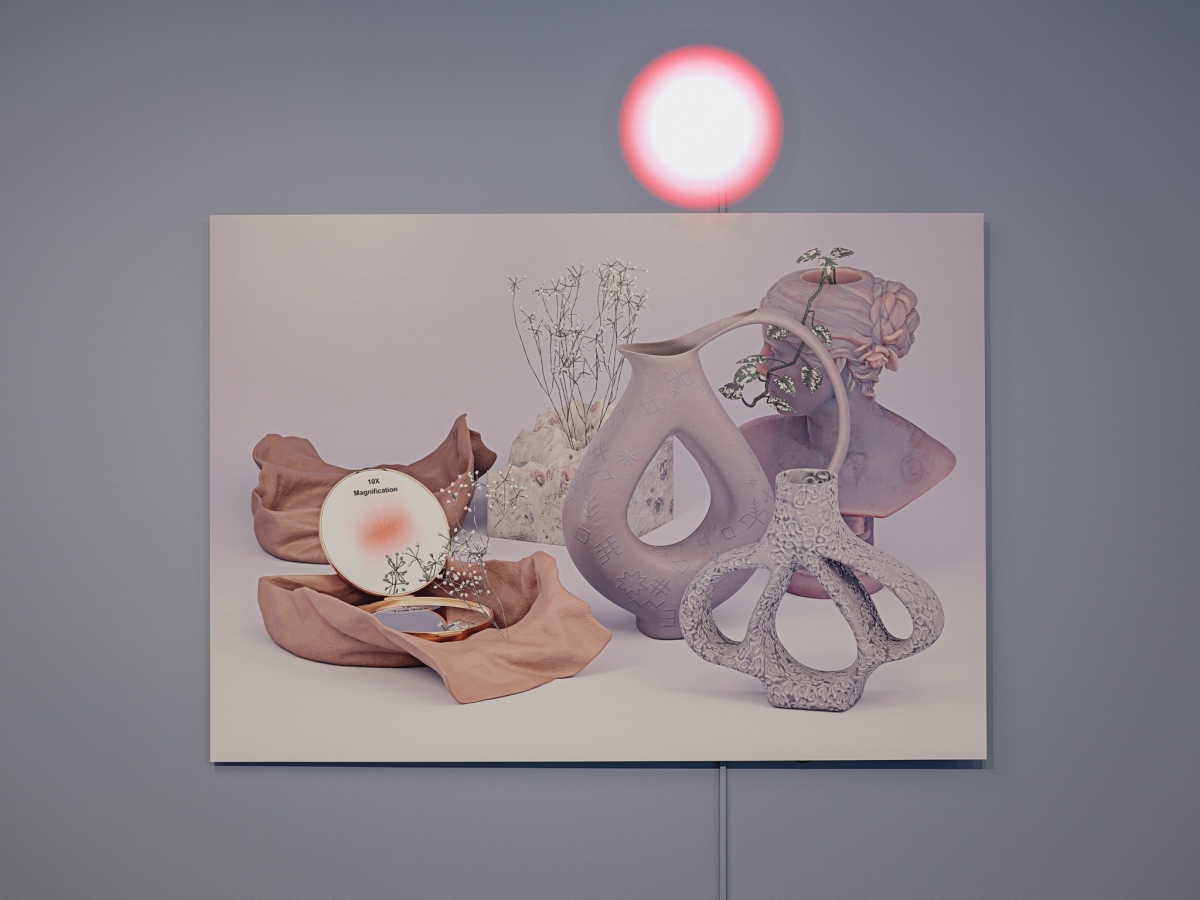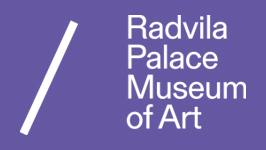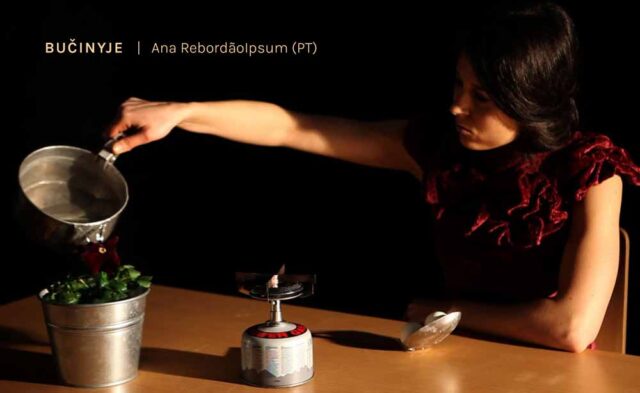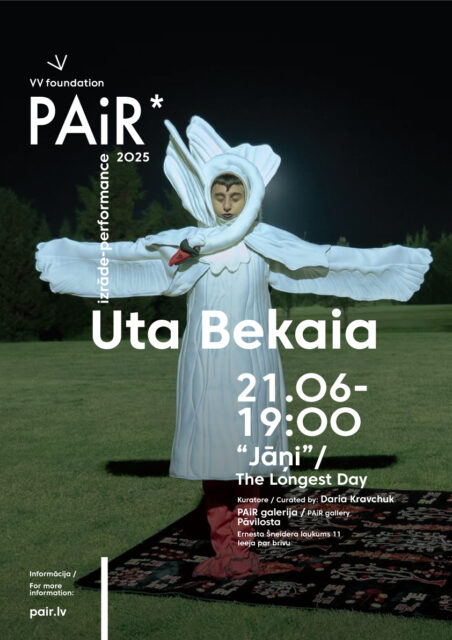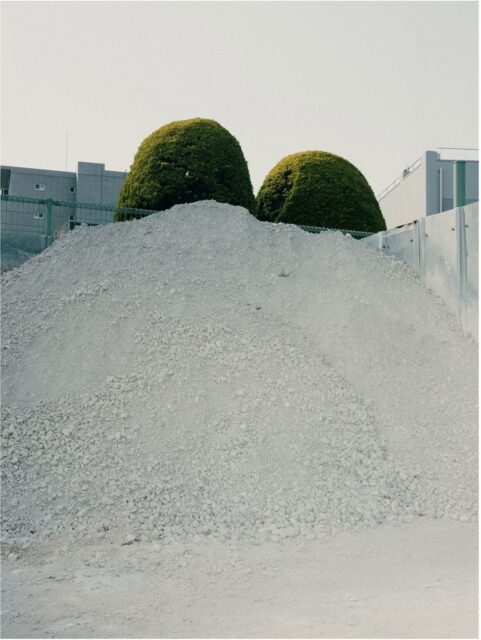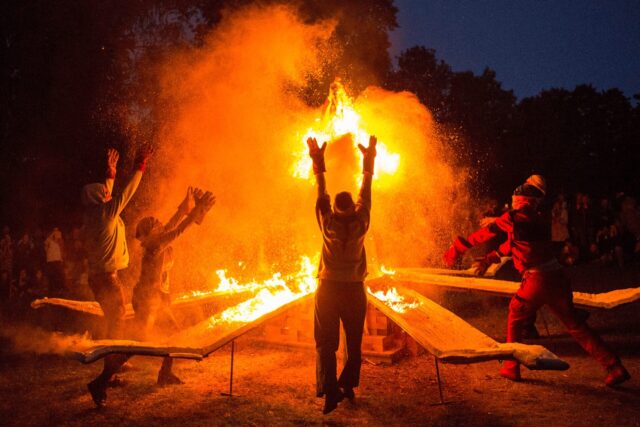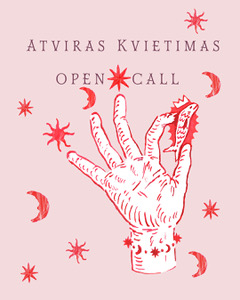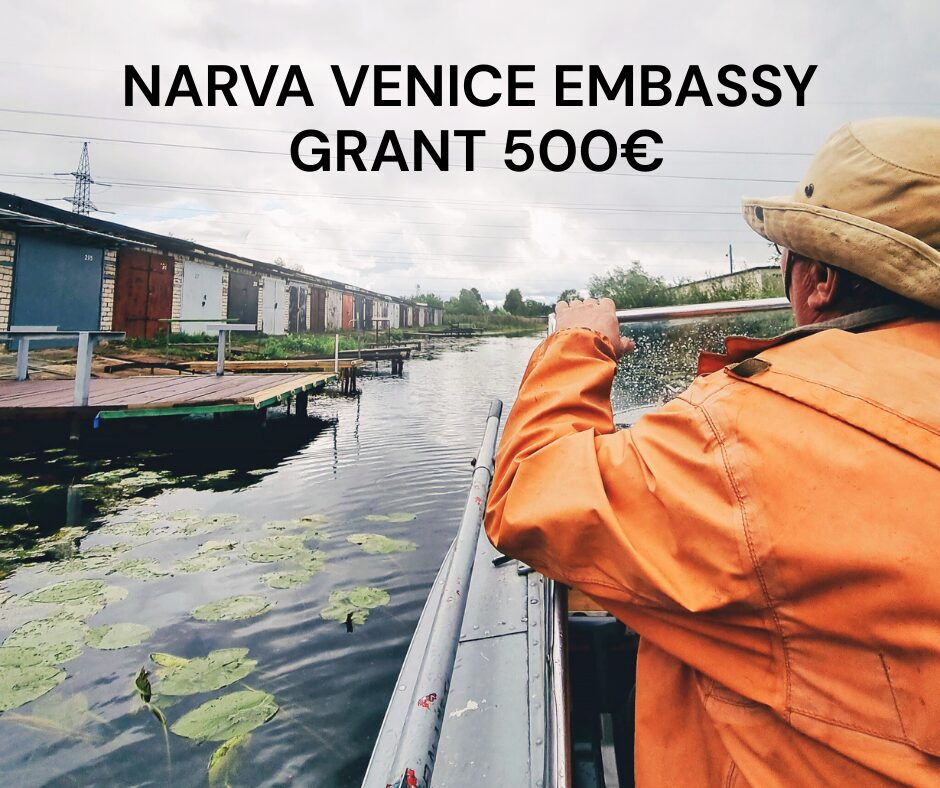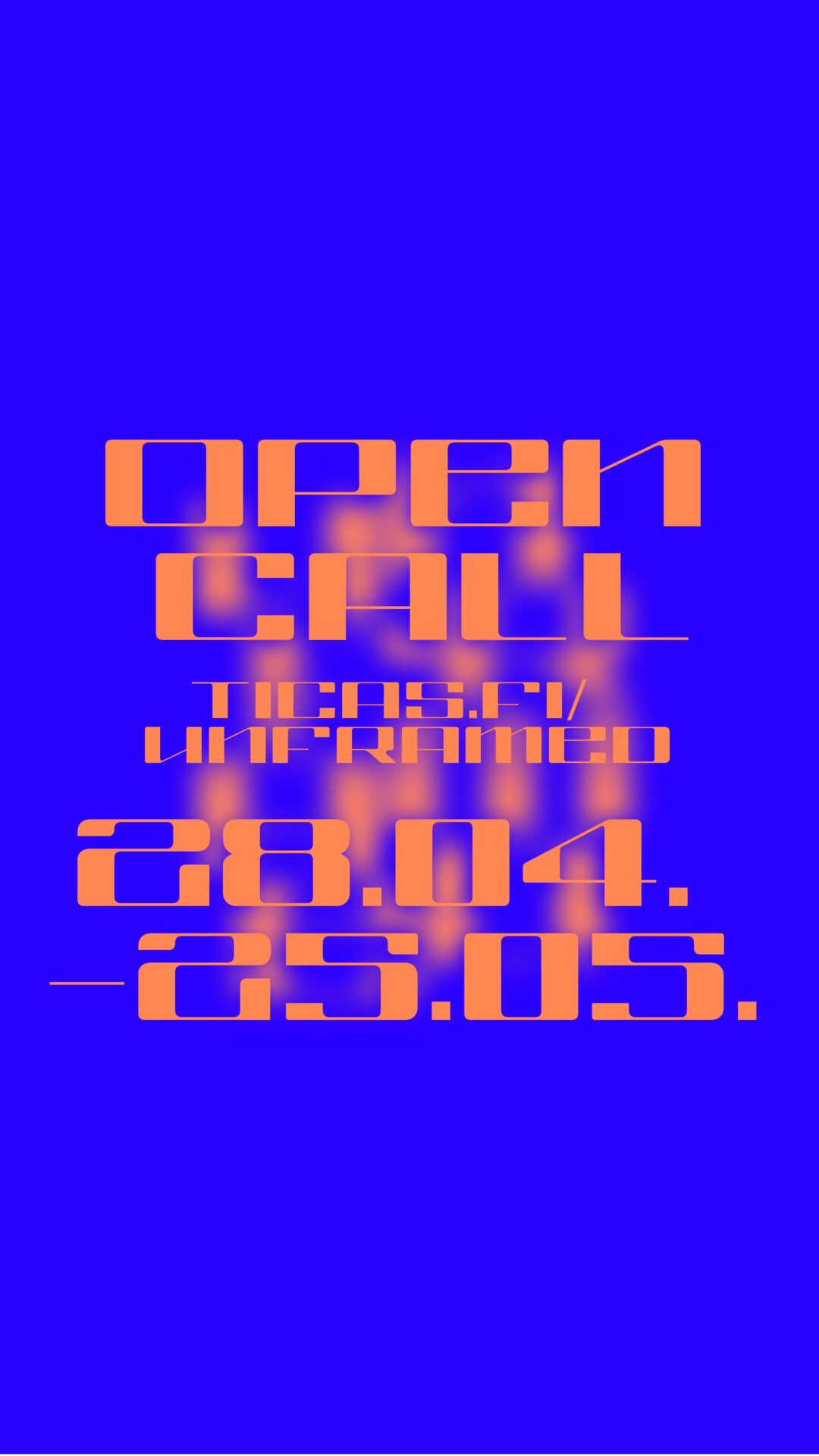Until 7 March, the ISSP Gallery in collaboration with Wunder Kombinat is hosting the solo exhibition I’m in this picture and I don’t like it by Santa France. The exhibition is presented as part of the publication “WunderKombināts II Latvian Art Yearbook 2023”, and is a spatial extension of the visual essay contained in the yearbook. The opening event of the publication will take place on 15 December at 6 PM at the ISSP Gallery.
Depicting people’s endless desire for control over their destiny, the search for inner peace and the desperate attempts to escape existential horror, Santa France has created a visual story that tells the conflict between different ways of thinking – magical and catastrophic – using the Japanese Ikebana and Kintsugi techniques as a visual and conceptual reference. In Ikebana art practice, the master creates floral compositions from various organic materials, following certain principles to structure nature into a form that is pleasing to humans. The performance of specific actions with the aim of influencing the order of things and the outcome of events is also in line with the principles of magical thinking. This is contrasted with catastrophic thinking, which denotes a state or tendency in which the individual focuses on the realisation of a potentially worst-case scenario, perceiving it as real, even if it is absurd and impossible. But even the worst-case scenario – a catastrophe – does not necessarily mean the end of something and a complete loss of control. Another Japanese artistic practice, Kintsugi, is used to repair broken ceramic vessels by collecting the shards and reassembling them into a whole object. The breakage of the vessel and the resulting cracks are seen not as something to be hidden, but as part of its history.
I’m in this photo and I don’t like it is a phrase referring to a now-defunct option on the social media platform Facebook, which allowed users to hide photos uploaded by other people.
Santa France (1993) is a Latvian multimedia artist currently living and working in Berlin. Her work is mostly related to the possibilities offered by 3D software and its application in web collages, videos, animated GIFs and digital illustrations. The hyper-realistic sterile environment and contrasting organic and man-made objects of her compositions not only expose the visual language of the software used to create them, but also speak about the problems of contemporary existence – digital culture, self-reflexivity, nostalgia and loneliness associated with life online.
The exhibition and public programme are organised by the cultural organisation WUNDER KOMBINAT (WK) in collaboration with the ISSP Gallery. The project is supported by the State Culture Capital Foundation and Riga City Council.
Photography: Ingus Bajārs
